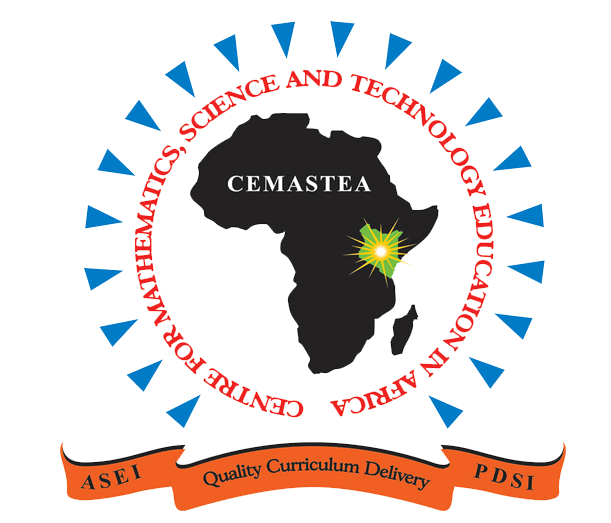

Synopsis of Volume 1, Issue 1
Centre for Mathematics, Science and Technology Education in Africa (CEMASTEA) is pleased to
share with you articles published in Issue 1 of Volume 1 of the Practitioner Journal of Mathematics
and Science Teachers (PJM&ST). The articles published in the PJM&ST are written by teachers who
are practitioners in the education and training sector.
Issue 1 of Volume 1 publishes seven articles that address various issues of practice pertinent to
enhancing the quality of education, which is pertinent to supporting Education and Training Sector
envisioned in the Social Pillar of Kenya Vision 2030. The articles highlight some issues related to
Sustainable Development Goal 4 (SDG 4) that aims to “ensure inclusive and equitable quality
education and promote lifelong learning opportunities for all” by 2030.
The Expanding Instructional Spaces for Biology: The Role of "Talking Walls" article by Joseph
Karanja Thuo emphasizes the role of the teacher in ensuring that students reap maximum
benefits from 'Talking walls' in their schools. The Learners’ Unique Responses: Can they be used to
Promote Learning? article by Rahab Chiira & Agnes Mwangi encourages teachers to draw on
learners‟ unique responses and use them to promote learning. The article on Modeling how to
Elicit Learners’ Ideas by Grace N. Orado calls on teachers to seek to understand learners‟ ideas,
the thinking behind those ideas, and leverage learning based on those ideas. The article titled
Demonstrating the Critical Angle and Total Internal Reflection Using a Laser Beam by John Kiplimo
Chumo shares an experience of designing an Optical Model for use in teaching the content on a
critical angle and total internal reflection in physics. The Magic of “Prerequisite Knowledge” in
Meaningful Learner Engagement article by Hilliard Peter Kiwaza Righa is a reflection from
personal experiences depicting that prerequisite knowledge is vital if learners are to be
fruitfully engaged in lesson activities. The article titled It Can be Done: Innovative Biology Practical
Activities that Learners Can Identify with by Kennedy Kivonya is an appeal to teachers to come up
with innovative activities and modified existing ones to make them learner-friendly for teaching
Biology concepts. The article titled An Interpretation of Universal Design for Learning and its
Application in the Competence-Based Curriculum by Mungai Njoroge shares an interpretation of
UDL principles and gives examples of how to actualize them to support the inclusion of all
learners in the learning process.
The ideas and opinions expressed in each of the articles are solely those of the
individual author(s). The reader is welcome to contact the corresponding author using
the address shared at the end of each article.
Enjoy the reading!